Nov 30th 2022 - Monica Cunanan
What is a Stock Pot? Types, Uses and How to Use Them
A stock pot is a large, deep pot that is often used for making soups, stock, stews, and cooking all kinds of hearty meals. A good stock pot is designed so it heats up quickly and cooks for a long time evenly. A large stockpot makes an excellent choice for boiling pasta, making soup, boiling seafood, or preparing a hearty meal.
Stock pots vs Saucepan: The Difference
A saucepan differs from a stock pot because it has a longer handle, has deeper sides, and usually has a lid.
Stockpots also come with lids but have much deeper side walls than a sauce pot and usually have two handles.
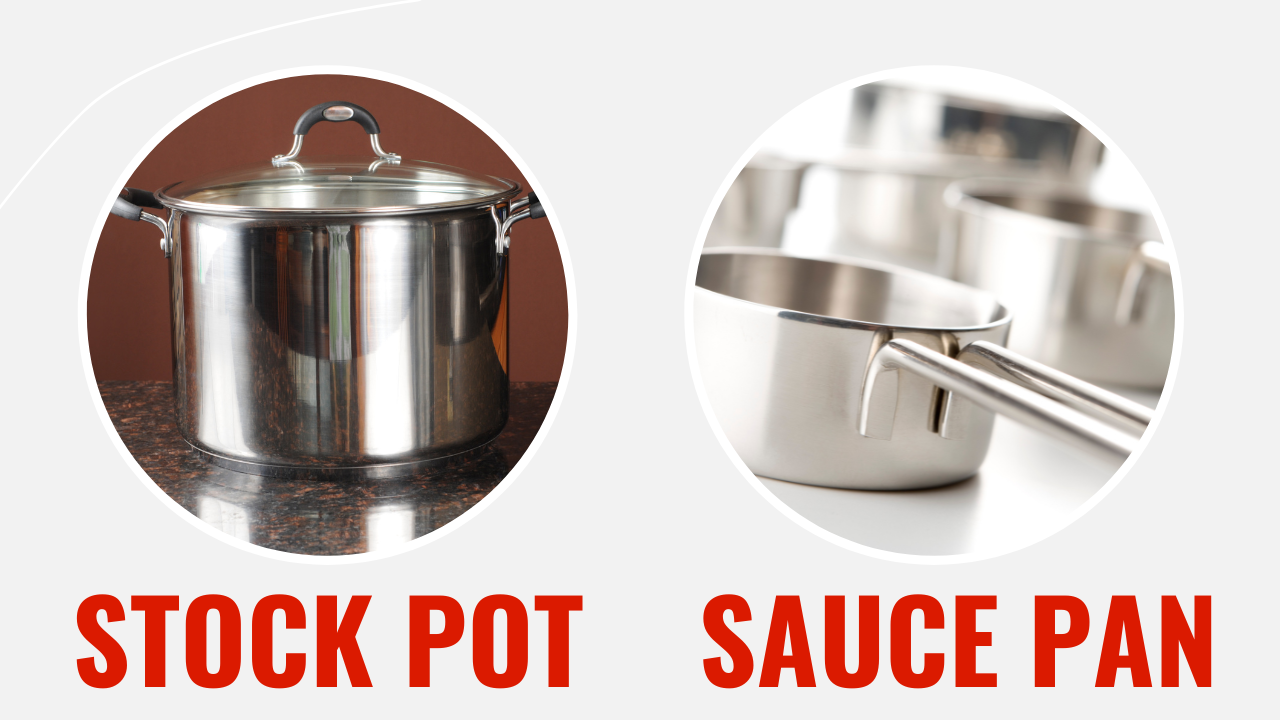
Types of Stock Pots
Before you go shopping for a stock pot, knowing which kinds of pots are available and how they impact cooking is important. You need to learn the materials' heat distributions and corrosion resistance properties too.
Stainless Steel Stock Pots
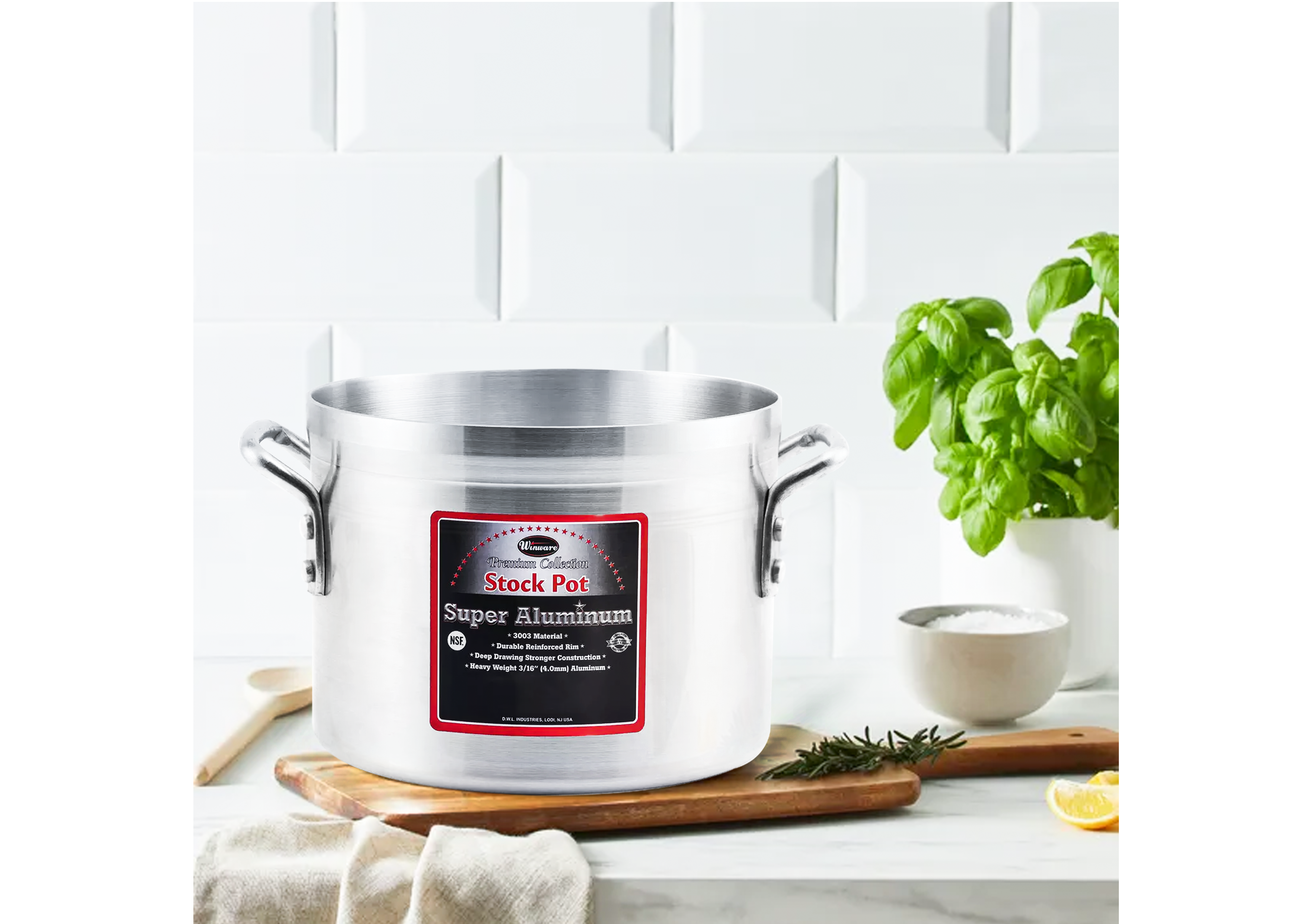
Most chefs agree that nickel-free stainless steel is the best choice for stockpots because it heats quickly, is lightweight, easy to wash, and is made to last. Stainless steel stockpots aren't coated, so they're easy to clean and won't scratch when using any kind of cookware or kitchen tool.
You can use some of the best stainless steel stockpots for induction cooktops. Stainless pots are often considered the best soup pots because they're not reactive to tomatoes and other acidic ingredients.
By itself, stainless steel isn't a good conductor of heat, so some stocks have stainless claddings and cores or bottoms made of aluminum or copper to improve their heat conduction. These materials also help keep the stainless steel stock pots more resistant to corrosion.
Model Featured: Winco AXS-24 24 Qt Professional Stock Pot
Tri-ply Stock Pots
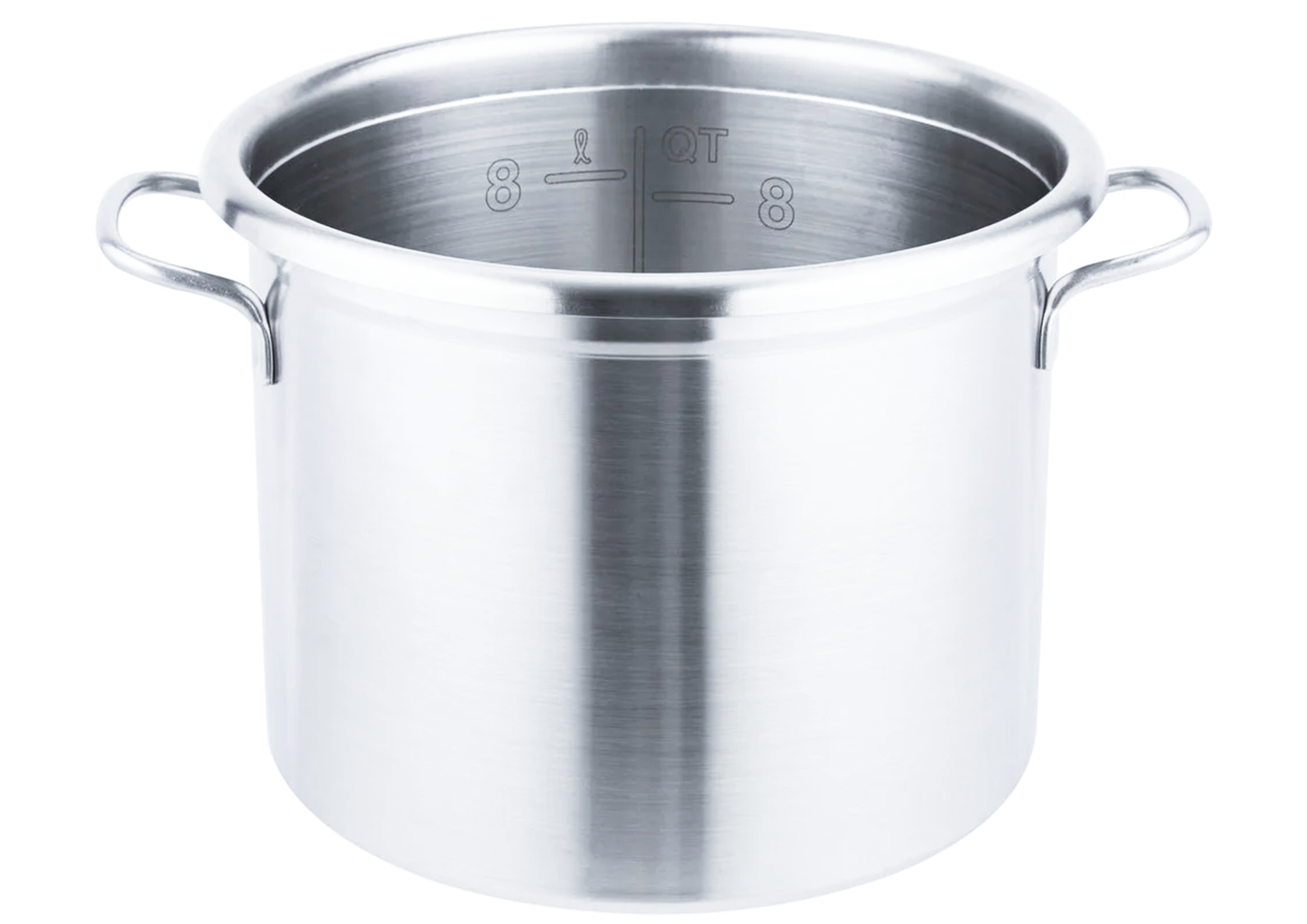
Tri-ply stoneware pots tend to be better at distributing heat evenly and conducting heat than single-ply stoneware. Tri-ply pots are made up of three layers: an inner layer of stainless steel; an outer layer of stainless steel; and a middle layer of either aluminium or copper. Bonded layers that go all the way up the side of the pot help prevent leaks.
Stainless steel materials are ideal for cooking because they're resistant to reactions with foods. They're not really non-sticking, but they're less likely to cling to tri-ply stock pans with a raised pattern or designs on the bottom. They're resistant to staining and corrosion.
Tri-ply stockpots are usually safe to use on induction cooktop stoves. Some of them may be labeled "dishwasher safe," but hand-washing is usually recommended.
Model Featured: Vollrath 77560 10 Quart TRI-PLY Stainless
Multi-Clad Stock Pots
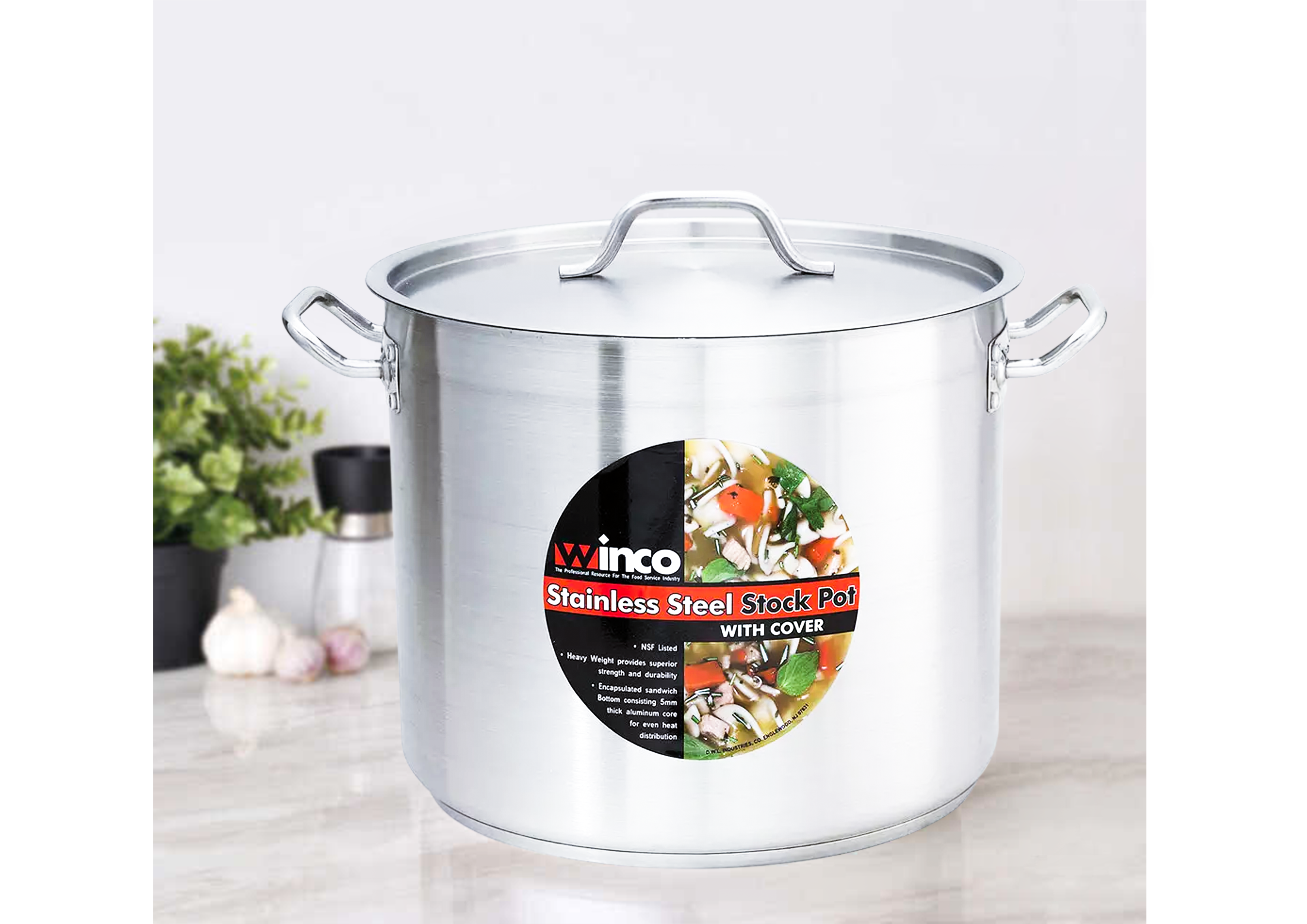
Multiclad pots consist of multiple types of material, with some having up to five or seven types of material. Adding multiple layers adds weight to the pot. Some chefs favor lightweight stockpots for their ease of use, but others may prefer them because they believe the additional insulation helps prevent the pots from warping.
Some induction cooktops are also safe for use with multiple-clad pans.
They have an aluminum core for superior heat conduction, and they're made up of two outer layers of classic stainless and one inner layer of classic stainless. Most of the best multi-layer stockpots can be used both on the stovetop and in the oven. Just like tri-ply pots with multiple layers, the best stockpot with multiple layers has cladding all the way up its sides.
Model Featured: Winco SST-8 8 Qt Premium Induction Stock Pot
Aluminum Stock Pots
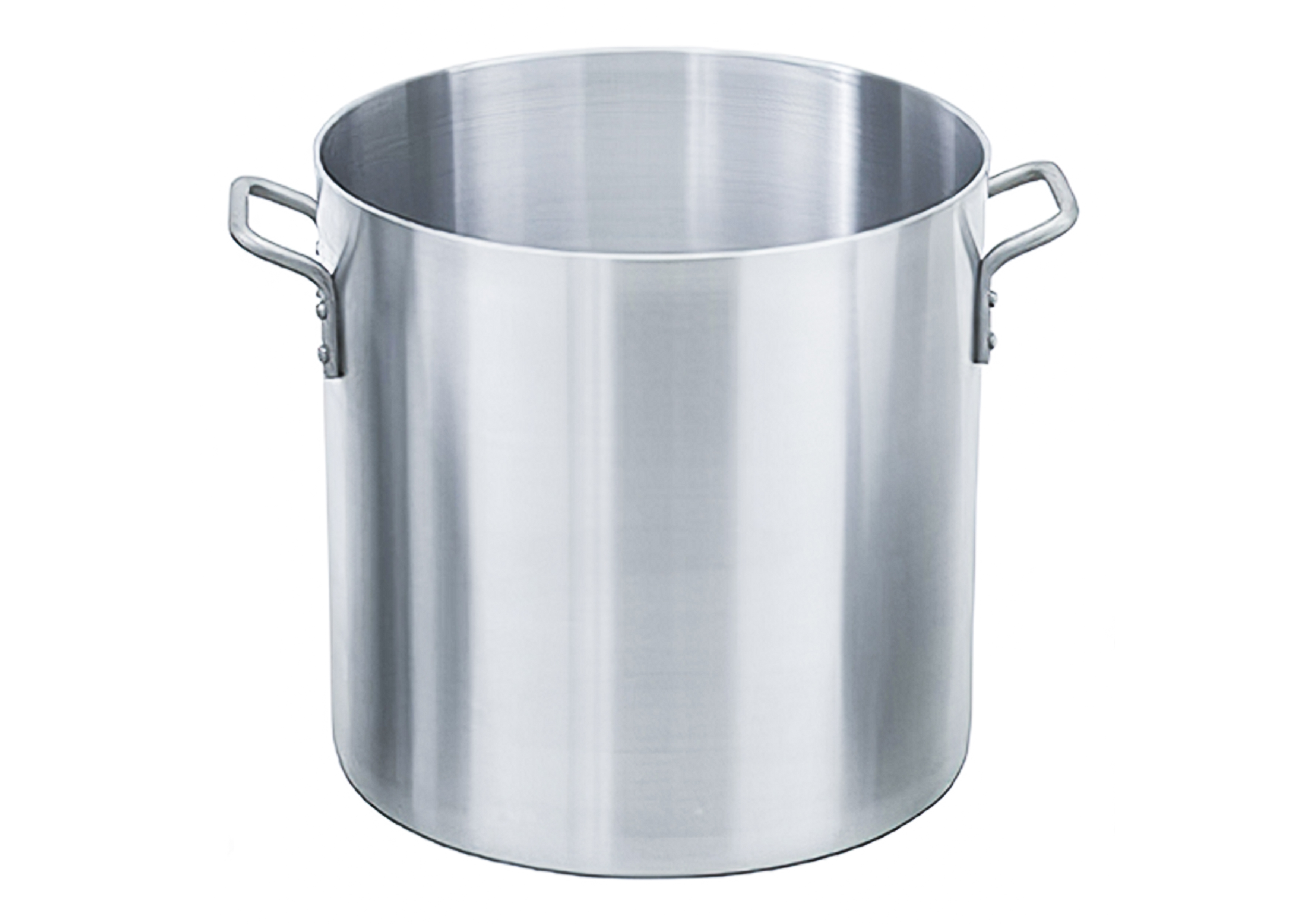
They're versatile cooking tools, usually available for an affordable price. They distribute heat quickly but they don't provide the same even heating that you'd get from using a stainless steel stockpot
Copper has better thermal conductivity than aluminum, but some foods such as tomato sauce and vinegar react to it so they turn brown when cooked on an aluminum pan. These types of food can also damage the pots over time, but most aluminum stockpots are sturdy and have good value.
Copper and aluminum both cool off quickly when they're taken out of their sources of energy. They're also lightweight. Aluminum is not suitable for induction cooking surfaces.
Model Featured: Royal Industries ROY RSPT 32 M 32 Qt. Straight Sided Aluminum
Hard-Anodized Aluminum Stock Pots
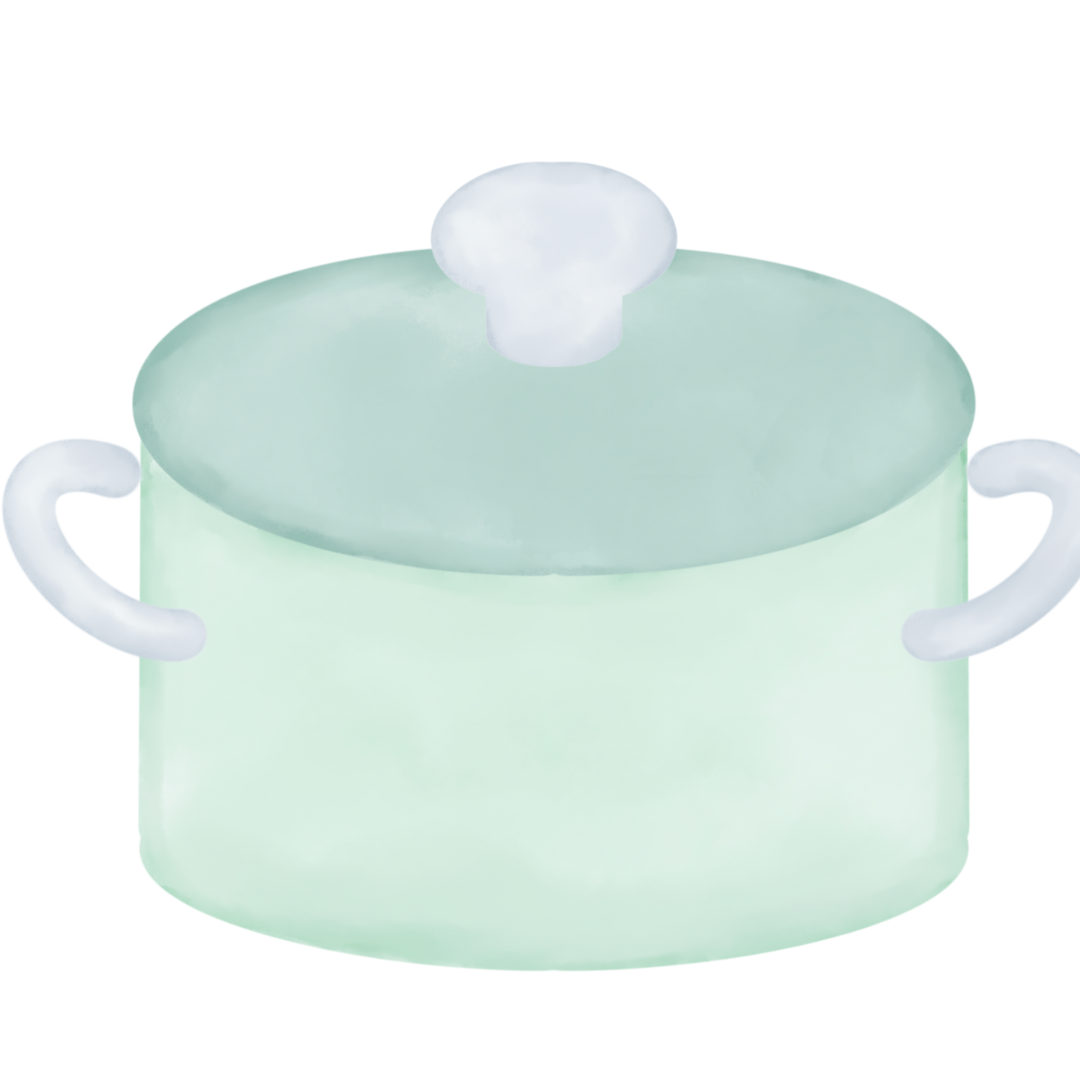
Hard-anodized aluminum stockpots are made from electrochemically-treated aluminum and this metal is about twice as hard than stainless steel and has an oxide layer that protects against scratches.
Raised design helps food release easily, so hard anodize aluminum stockpots aren't quite as non-sticking. This material doesn't react with food.
These stockpot pans are also easy to clean, and they're sturdy enough to be used in the oven at high temps. Anodized aluminium pots are usually lighter than non-anodised ones but they're not necessarily lighter than stainless steel stockpots.
Hand washing is recommended for anodized aluminium stockpots.
Non-stick Stock Pots
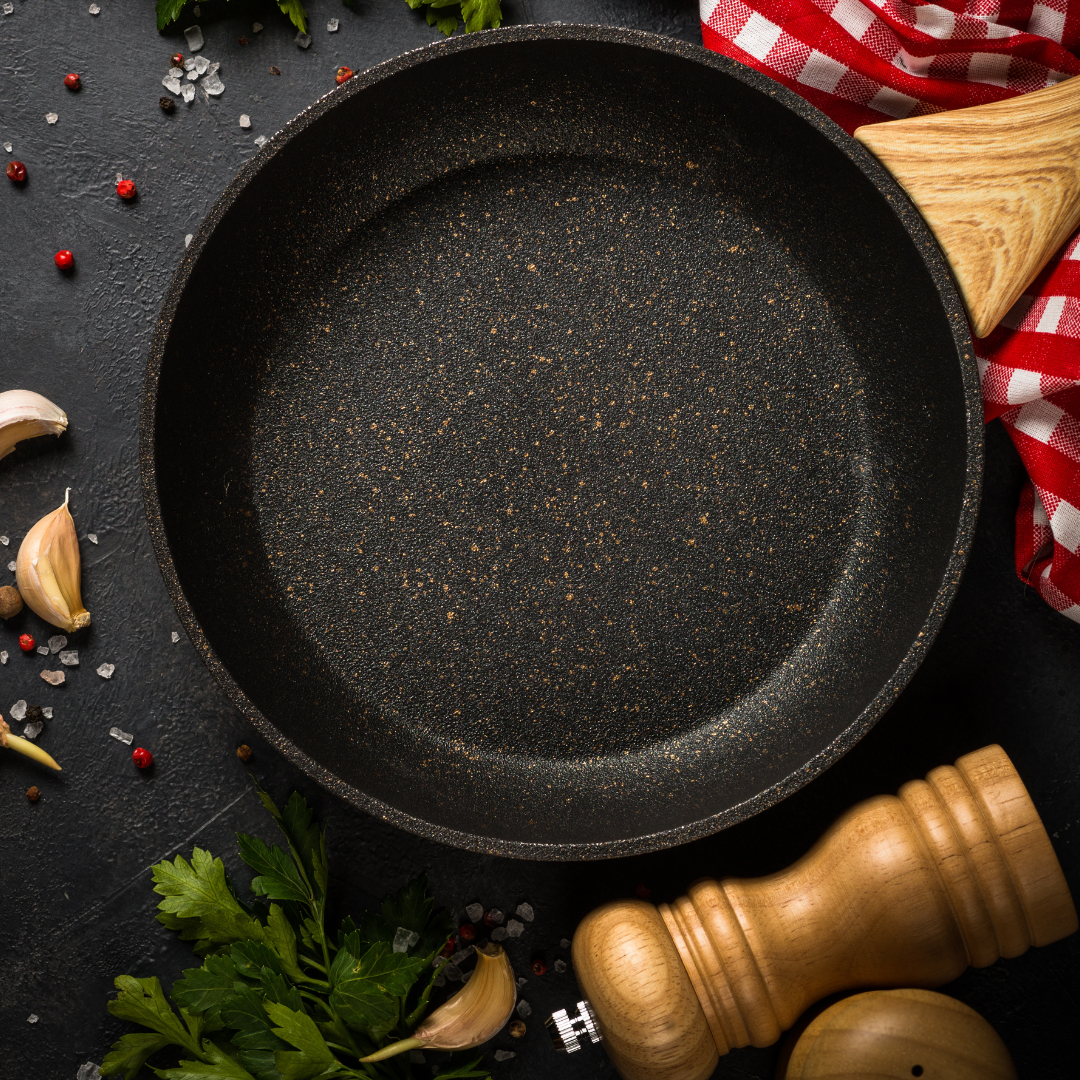
A lot of good quality non-stick stockpot pans are made from aluminum and they conduct the best. They're made from non-stick materials so they don't stick to foods and are easy to clean up, which makes them simple to keep clean. Many are easy to clean, but some require special care.
Hand-washing them ensures that the non-stick coating lasts longer.
Most non-stick pots and pans are best for cooking soups, stews, and other foods on low-medium heat. The non-stick surface may become scratched if used at high temperatures. They're usually oven safe, but they aren't always suitable for baking at high temperatures. Use cooking utensils made of plastic, nylon, or wooden materials when using non-stick cookware.
Sizes and Uses of Stock Pots
Do you want to buy new cookware, but don't know which type of pan to choose? We’ll now take a look at the different sizes available and the things to think about when choosing one.
Stockpots come in different sizes depending on their capacity. There are four main types of stockpots available: 6-quarts, 8-quarts, 12-quarts, and 16-quarts. They can also range from 20-60 quarts and are mainly used in commercial kitchen settings.
Let’s now examine the various pot sizes available to you so that we can determine which one best suits your needs.
| Capacity | Best Used for |
| 3-Quart |
|
| 4-Quart | Cooking small chickens |
| 5-Quart |
|
| 6-Quart |
|
| 8-Quart | Poultry stock, vegetable stock |
| 12-Quart |
|
| 16-Quart | Canning |
| 20-Quart |
|
| 24-Quart | Commercial kitchens |
| 32-Quart | Commercial kitchens |
| 40-Quart | Commercial kitchens |
What to Look For When Buying Stock Pots
A stock pot’s purpose is not just to cook for hours but also to be able to handle larger amounts of foods that have a more liquid consistency. At the same moment, the stockpot must be able to withstand the heat for a long period of time.
When buying a stockpot for your own kitchen, there are several things you need to consider:
Size

Stockpot sizes range from as small as 3 to 4 quarts to as large as 60qt. Or more.
You should use bigger pots for stocks than you do soups because you usually make a bigger batch of stock than you make soup. Size ranging from 6-12 qt is good for home cooks because they provide adequate cooking space for most people’s kitchens. Consider larger sizes if you're running a commercial kitchen.
Shape
Stockpots typically have a round base, straight sides, and a lid. This is why this is a better option if you are serving a big number of guests. If you don't have to serve soup for about 80 people, a smaller, shorter, or wider saucepan would do.
Structure

You want to buy a stockpot that has a thick, heavy base so that the food inside doesn't burn. It's especially true when it comes to stocks. The recipe calls for cooking the broth for several hours, which means the pot will sit on the stove for a long period of time.
You don't want the ingredients to burn and stick to the pan because it is too thin.
Materials

There are lots of different opinions out there about what kind of material a good stock pot should be made from. There are many types of cookware available for purchase including copper, aluminum, cast iron, stainless steel, non-stick, and combinations of these materials. Each material has its pros and cons, including cost.
Today, you can buy stock pots made of hard anodized aluminum. The end result is actually harder than pure stainless steel and not reactive to acids. There are lots of options for materials.
Food-grade, nickel-free stainless steel stockpot has been a popular choice because it is durable, nonreactive, nonstick, and affordable, so it makes for a good choice!
Conductivity
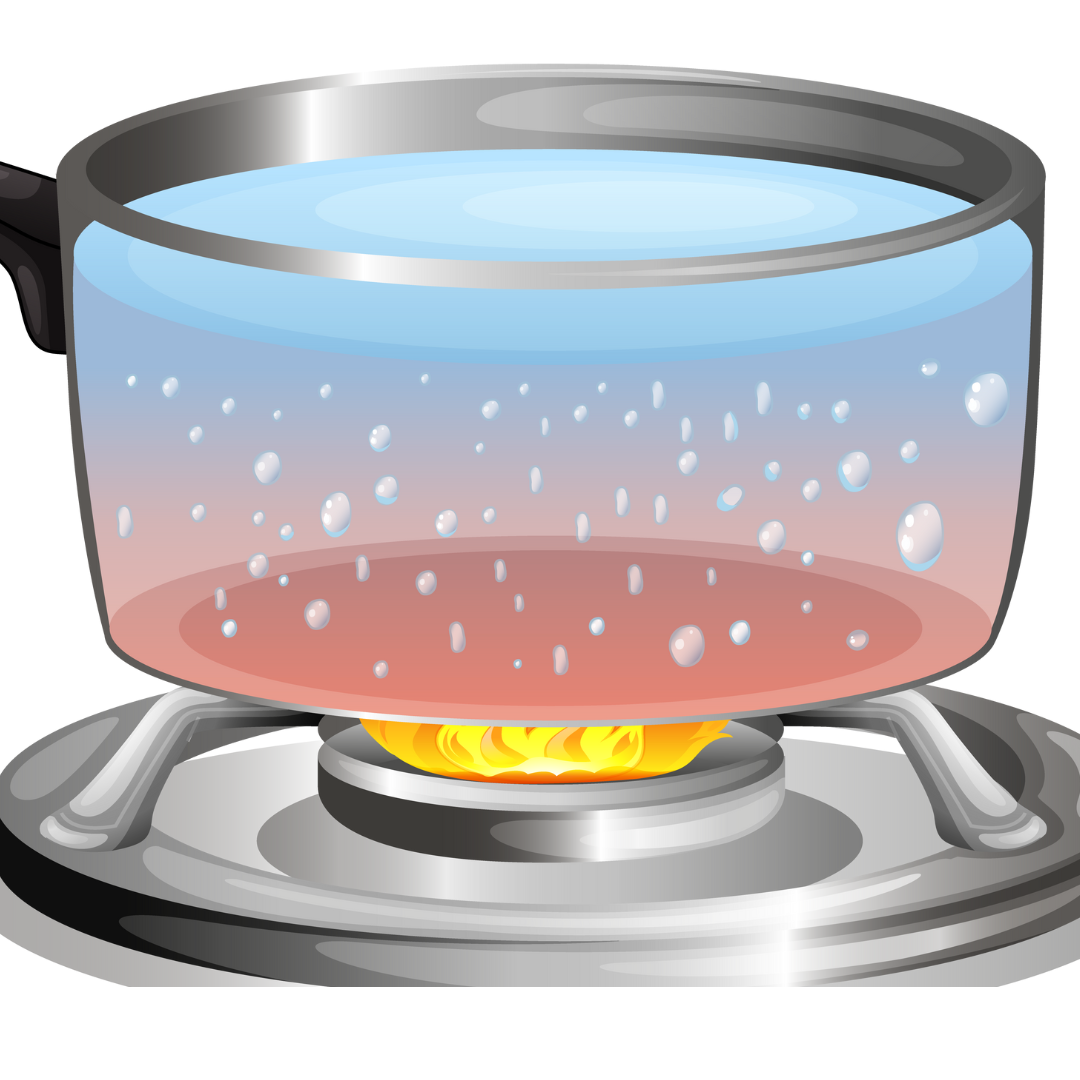
Always check the temperature of the water before adding it to the pot. Make sure that the water is at an even temperature throughout the entire cooking time. A well-made stockpot is one that transfers heat evenly across its entire surface so that the food cooks the right temperature throughout. You want the stock at the base of the pot to be cooking evenly with stock at the upper part of the pot. Different metals conduct heat differently, which means that it’s important for you to find the right combination of the kind of pot you use and how you prepare food with it.
Handle
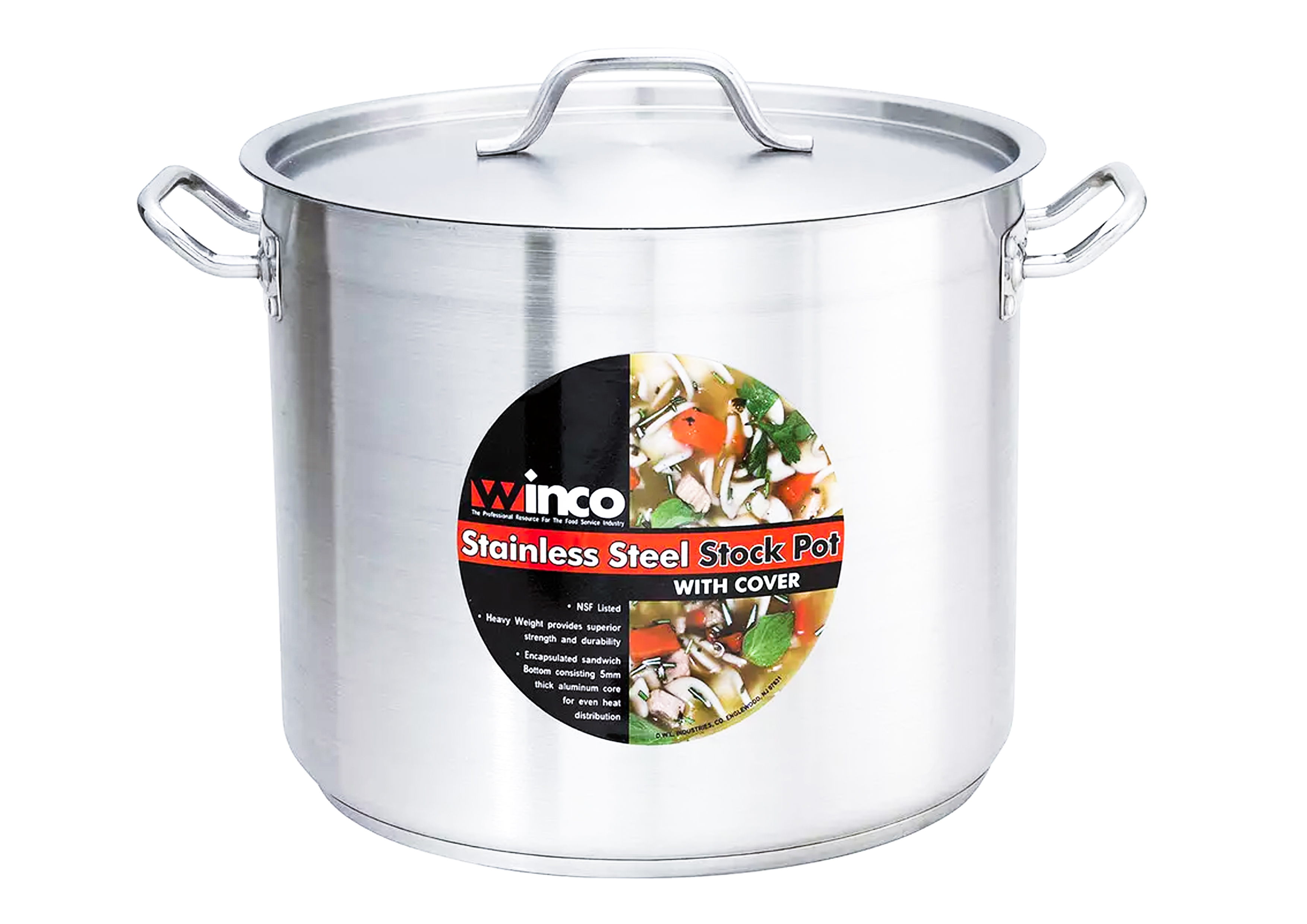
You don't need a fancy pot for cooking but if you're going to use it to cook large amounts of liquid, you want one that feels sturdy enough not to tip over when you lift it.
Look for cookware that has secure attachments so they won't fall off when you're cooking. To spot these stockpots, check out those that have heavy screws or rivets attached to them.
New cookware has been designed so that they don't get too hot when cooking on your stovetop. If you're moving something from the stovetop to the kitchen counter, then you need to be careful not to burn yourself when you pick up the pot. Cool resistant doesn't necessarily mean cool proof. Use oven mitts when removing pots from a hot oven.
Look for handles that fit well into your hand and feel comfortable when gripping them. You need enough space to be able to pick up with potholders gloves and a comfortable shape such as a flat handle for picking up.
Model Featured: Winco SST-8 8 Qt Premium Induction Stock Pot

